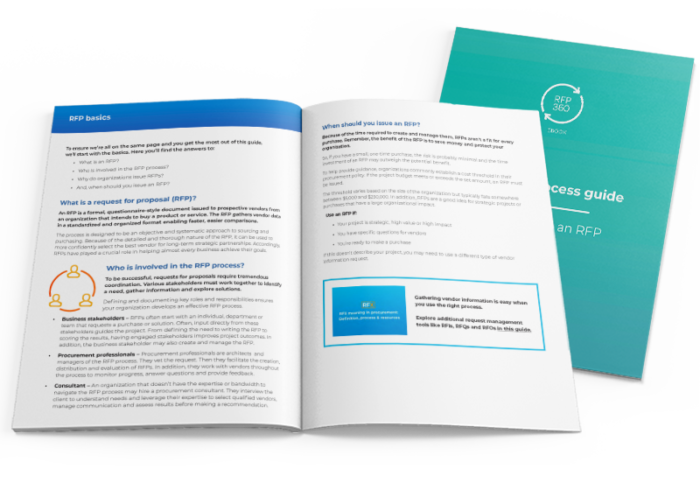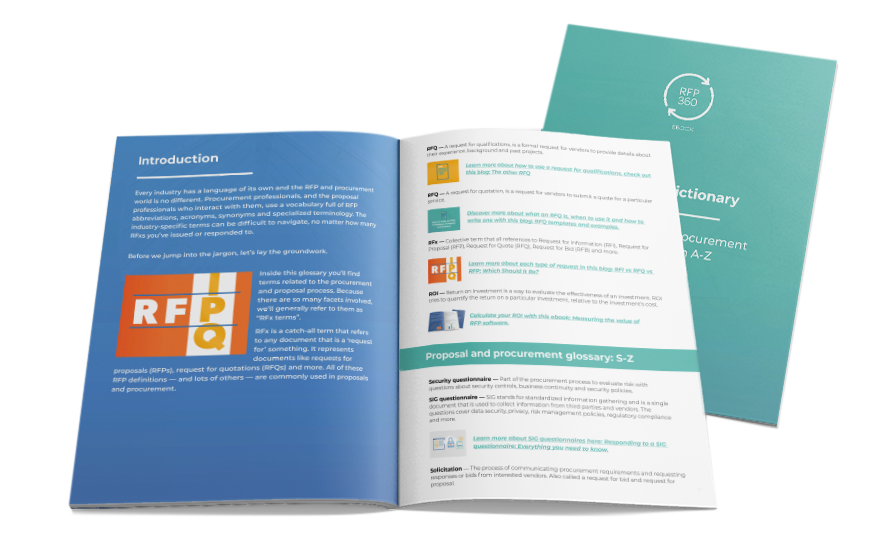In procurement, both cost savings and cost avoidance are strategies used to reduce expenses. Indeed, both are part of a holistic approach and are often used as procurement KPIs. But, when it comes to differentiating between cost savings vs cost avoidance, a lot of questions arise.
What situations call for cost savings vs cost avoidance? Which approach is best? How can you calculate them?
In this blog, we’ll endeavor to answer these questions and more. To begin, we’ll define both terms and offer an overview of how to calculate them. Next, we’ll compare cost savings vs cost avoidance — highlighting the differences. And finally, we’ll explore specific, everyday examples of each so you can see how they might apply to your organization.
Definitions: Cost savings and cost avoidance
What is cost savings?
Cost savings is when you take action to reduce spend, saving your organization money. Because cost savings is actualized, quantifiable and verifiable, it is sometimes referred to as ‘hard cost savings’.
Often, procurement teams achieve cost savings through negotiation of fees, bulk discounts, renewal contracts and so on. You can also increase cost savings through partnerships, predictive forecasting and supply base rationalization.
How to calculate cost savings
To calculate cost savings, simply take the pre-negotiated cost (or use the market rate if a pre-negotiated cost isn’t available) and subtract the final contracted cost. The result is the amount of your cost savings.
Cost savings calculation as an amount
Initial proposed cost – final contracted cost = cost savings amount
While the equation can certainly become more complex, this is the foundation for all cost savings calculations. Additionally, it’s worth noting that some procurement teams prefer to report cost savings as a percentage rather than a dollar figure. In that case, you should subtract the final contracted price from the initial proposed price. Then, divide the result by the non-negotiated price.
Cost savings calculation as a percentage
Initial proposed cost – final contracted cost = difference
Difference / initial proposed cost = cost savings percentage
How is cost savings used?
As mentioned in our introduction, cost savings is often used as a procurement key performance indicator (KPI). Procurement teams carefully track, manage, report and optimize cost savings. Often, teams will have benchmarks and goals based on this metric.
Additionally, organizations report cost savings in financial statements and budgets. Furthermore, according to a Deloitte study, 79 percent of chief procurement officers (CPOs) consider it their main priority. So, it’s important to ensure accuracy. Many organizations use the RFP software to centralize and document the vendor selection and negotiation process while also ensuring auditability of cost savings.
To explore how RFPs support procurement savings, download the RFP process guide ebook.
What is cost avoidance?
Cost avoidance is a proactive action taken by an organization to reduce or eliminate future expenses. Because this calculation is based on theoretical, intangible expenses, cost avoidance is considered a ‘soft cost savings’.
You can achieve cost avoidance by performing preventative maintenance, reducing contract renewal rates, making substitutions and securing warranties. Admittedly, cost avoidance is nuanced. Cost avoidance often means investing in a solution or spending money now to save more in the future.
Download this glossary as a quick guide to procurement terms, acronyms and jargon.
How to calculate cost avoidance
To quantify the value of cost avoidance you must estimate the projected cost of not taking action. Then, subtract the cost of the proactive solution. The result is the amount saved by cost avoidance. Similar to calculating cost savings, you can calculate this metric as a percentage using a similar, simple equation.
Cost avoidance calculation as an amount
Projected cost of inaction – cost of proactive solution = cost avoidance savings amount
Cost avoidance calculation as a percentage
Projected cost of inaction – cost of proactive solution = avoided cost
Avoided cost / cost of inaction = cost avoidance savings percentage
How is cost avoidance used?
While cost avoidance figures aren’t included in financial reports, it is important to keep the practice in mind. Indeed, cost avoidance ensures that you can mitigate and manage large unexpected expenses and annual cost increases. Proactive cost avoidance is particularly important and effective when renegotiating or renewing contracts in high-inflation markets.
What’s the difference? Cost savings vs cost avoidance comparison
Cost savings and cost avoidance are both ways to reduce direct and indirect spend and improve your organization’s financial position. However, it’s important to be able to effectively classify and report your efforts. Here’s an overview of cost savings vs cost avoidance
In short, cost savings lower the price you’re paying now. On the other hand, cost avoidance mitigates or eliminates potential future costs.
Cost savings
- Reactive
- Hard cost savings
- Tangible, quantifiable savings
- Negotiate now to reduce costs now
- Reported on financial statements
Cost avoidance
- Proactive
- Soft cost savings
- Estimated savings based on predictions
- Spend or act now to save costs later
- Not reported, but tracked by procurement
Examples of cost savings and cost avoidance
When it comes to understanding cost savings vs cost avoidance, there’s nothing quite like seeing it in action. Explore these examples to learn more and consider how you might adopt cost savings and cost avoidance measures in your organization.
Simple cost savings example – Term negotiation
Your business issues a managed print services RFP to find a provider for 10 office locations. The proposals come back and the best vendor for the job quotes $10,000 per year, per office. You negotiate with the vendor and agree to a two-year contract term at $8,000 per year, per office. In this cost savings example, your organization realized a cost savings of 20 percent.
Combined cost savings and cost avoidance example – Added value and limited rate increase terms
Your organization is planning to grow over the next two years. So, you work with the vendor to negotiate a contract that includes a higher volume of supplies, faster printers with advanced features and a more comprehensive service agreement for the same proposed rate of $10,000 per year, per office. The added value is worth $4,000.
Additionally, you see that rates have historically increased by 20 percent each year. You negotiate a three-year term with a maximum increase of 10 percent annually after the first year.
In this scenario, you’ve realized an initial cost savings of 28.5 percent and an additional cost avoidance of 24.3 percent over the second and third year.
Simple cost avoidance example – Renewal negotiation
The market value of print services is increasing. At current rates, the same services you negotiated down to $8,000 per year now retail for about $12,000 per year. You’re happy with the vendor and know that a disruption to the service to switch providers will reduce efficiency and slow processes.
So, as part of your regular vendor performance evaluations and ahead of your contract expiration, you propose a new agreement term of three years at a rate of $9,000. The vendor agrees. Even though you’re spending more than your initial rate, you still are paying below market value. In this cost avoidance example, you saved your organization an estimated 25 percent over the next three years. In addition, you’ve saved labor costs and downtime that would have resulted from implementing a new service provider.
Complex cost avoidance example – Adding services in-house
You decide to explore bringing printing services in house. To meet current demands, you’ll need to buy 10 printers and hire a regional technician to service them. The printers will cost $20,000 each and have an expected life span of 10 years. And, the technician will cost $45,000 per year.
The initial expense for the printers is $200,000. But, when you calculate the cost of the technician and supplies over 10 years, you estimate you’ll only spend $7,000 per year, per location — a potential cost avoidance of 30 percent. Now, this is where it gets more difficult to calculate cost avoidance.
When considering longer term investments, there are a lot of factors that can impact your savings. For example, merit increases, travel expenses and benefits for the in-house technician will change. Additionally, supplies for the machines, replacement parts and maintenance costs are all variables that will change with market trends and likely can’t be accurately predicted. So, be sure to think about the procurement process from a big-picture when calculating costs.
Additional examples and research
Cost avoidance research from the Journal of Business Logistics
This research paper aptly titled Cost avoidance: Not everything that counts is counted offers in-depth examples insights about how to calculate and prioritize cost avoidance.
Cost avoidance example from Conejo Valley Unified School District
This overview document strives to capture the nuance between reported cost saving and cost avoidance. It uses vehicle gas mileage to illustrate cost avoidance in an approachable way.
Guide to benchmarking cost savings and cost avoidance
While this guide provided by the National Association of State Procurement Officials (NASPO) is more than a decade old, it still provides a great foundation for understanding cost savings vs cost avoidance. Indeed, it also offers guidance for benchmarking and measuring success.
Ultimately, it’s crucial for procurement managers to understand, embrace and pursue all avenues to maximize the value of vendor relationships and effectively manage spend. Certainly, both cost savings and cost avoidance approaches have a role to play in every business. But hopefully, you’ll now be able to easily identify, categorize and optimize your cost savings and avoidance measures.


